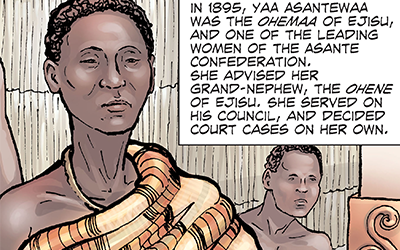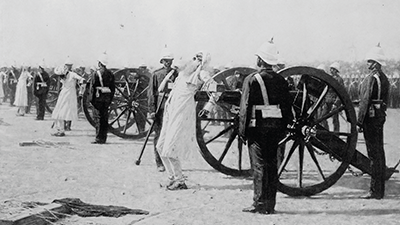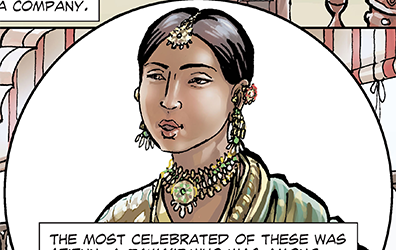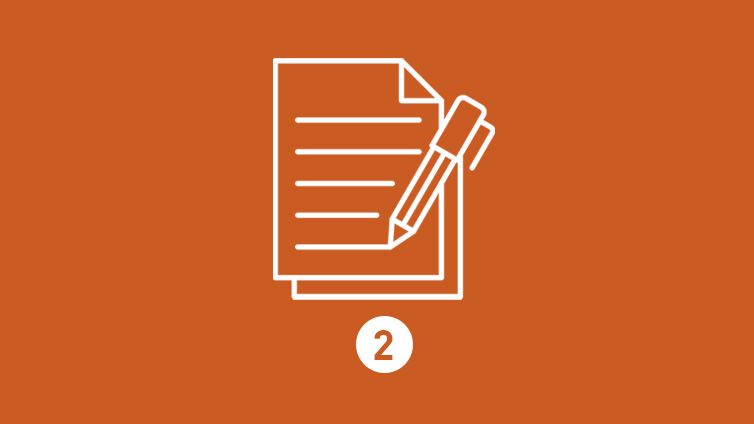Resisting Colonialism in Ghana and India
Teacher Resources
Driving Question: How did people in Ghana and India resist colonial rule?
In Ghana and India, resistance emerged even when colonial power seemed impossible to challenge. Rebellion, leadership, and courage shaped these struggles—and continue to shape how they are remembered today.
Learning Objectives:
- Examine the different direct and indirect strategies used to resist colonialism.
- Use the historical thinking skill of causation to understand challenges to colonial rule during this period.
- Use a graphic biography to support, extend, or challenge the overarching narratives of this period.
Vocab Terms:
- boycott
- colonialism
- direct rule
- mutiny
- racism
- resistance
- sepoy
Opener: Resisting Colonialism in Ghana and India
To teach this lesson step, refer to page 2 of the Lesson 5.5 Teaching Guide.
Learn how other teachers select resources on decolonization by reading Decolonization Case Studies: Which one? in the OER Project Community Forum.
Review the many different forms of resistance that colonized people used to push back against the constraints of empire.
Resistance in Ghana
To teach this lesson step, refer to page 3 of the Lesson 5.5 Teaching Guide.
Graphic biographies are an exciting feature of OER Project courses, learn more about then in the OER Project Graphic Biographies Guide.
Learn how Ghanaians challenged colonial rule through everyday resistance and bold leadership. These materials highlight powerful actions taken by individuals and communities to defend their land and dignity.
-
Guiding Questions
-
Before you watch
Preview the questions below, and then review the transcript.
While you watch
Look for answers to these questions:
- What did it mean to say Ghana’s independence was “won by blood”?
- Who was Yaa Asantewaa, and how did she fight colonial rule?
- What was the Golden Stool, and why was it important?
- Why did some resistance target local chiefs, especially after World War II?
- What was Kwame Nkrumah’s strategy for achieving independence?
After you watch
Respond to these questions: What causes of resistance stand out when you view the video through the communities frame? What about through the production and distribution frame?
Key Ideas
-
Guiding Questions
-
Before you read
Preview the questions below, and then skim the comic, paying attention to things like prominent colors, shapes, and types of text and fonts. How do you know where to start and in which direction to read? What’s in the gutters (the space between panels)? Who or what is the focus of the comic?
While you read
- What was the Asante state, and who was Yaa Asantewaa?
- What role did the Queen Mother, or Ohemaa, play in Asante society?
- What happened in 1895, and how did it shape Yaa Asantewaa’s actions?
- What events unfolded in 1900, and how did Yaa Asantewaa respond?
- How does the artwork in this biography represent Yaa Asantewaa’s leadership?
After you read
Respond to the following question: How does this biography of Yaa Asantewaa support, extend, or challenge what you've learned about resistance to colonial rule in this period?
Resistance in India
To teach this lesson step, refer to page 4 of the Lesson 5.5 Teaching Guide.
Looking for ways to give feedback to students on their causation skills? Try the Causation Feedback Form.
Learn what sparked the 1857 Indian Uprising and how Indian people challenged British colonial rule. This activity, article, and comic highlight the pivotal roles individuals played in challenging colonial rule.
-
Guiding Questions
-
Before you read
Preview the questions below, and then skim the article. Be sure to look at the section headings and any images.
While you read
Look for answers to these questions:
- Who ruled much of India in 1857?
- What was the doctrine of lapse?
- Who made up most of the East India Company’s army, and how were they treated?
- What event sparked the 1857 uprising?
- What was the outcome of the uprising?
After you read
Respond to this question: Why do the words we use—such as mutiny, revolt, or war of independence—shape how we understand the 1857 uprising?
-
Guiding Questions
-
Before you read
Preview the questions below, and then skim the comic, paying attention to things like prominent colors, shapes, and types of text and fonts. How do you know where to start and in which direction to read? What’s in the gutters (the space between panels)? Who or what is the focus of the comic?
While you read
- Where did Azizun live, and what was the political status of that place in 1856?
- What was a Tawa’if, and how did the British view them?
- How did Azizun respond to the events of 1856 and 1857?
- In what ways did Azizun defy expectations for women at the time?
- What message does the final image send about Azizun’s resistance?
After you read
Respond to the following question: How does Azizun’s story support or challenge what you’ve learned about the “civilizing mission” and resistance to colonial rule?
Closer: Resisting Colonialism in Ghana and India
To teach this lesson step, refer to page 10 of the Lesson 5.5 Teaching Guide.
Get an idea of how other teachers use Unit Notebooks by checking out this thread on best practices in the Community Forum.
In this unit, you explored how imperialism reshaped global power. Now, use what you’ve learned to compare colonial systems and reflect on their lasting impact today.
Resistance Across Africa
To teach this lesson step, refer to page 10 of the Lesson 5.5 Teaching Guide.
Across Africa, colonial resistance wasn’t one-size-fits-all. Here, you’ll examine how geography, leadership, and local priorities shaped anticolonial strategies.
-
Guiding Questions
-
Before you read
Preview the questions below, and then skim the article. Be sure to look at the section headings and any images.
While you read
Look for answers to these questions:
- What forms did African resistance to colonialism usually take?
- Why did Italy try to conquer Ethiopia?
- What strategies did Samori Ture use to push back against the French?
- How did Samori Ture respond after an early military defeat?
- How did leaders in Tanganyika try to unite people against German rule?
After you read
Respond to these questions: What was one idea or strategy that many resistance leaders shared? Why do you think it was important to their communities?








